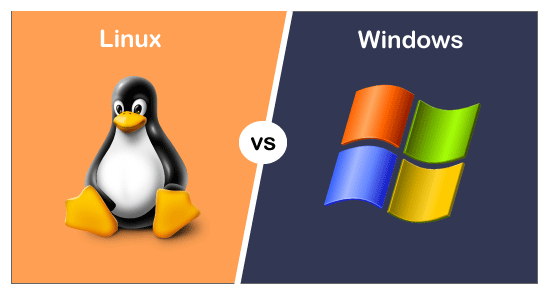In this discussion, we will explore the reasons behind this assertion. Created by Linus Torvalds in 1991, the Linux kernel is a free and open-source operating system kernel, allowing anyone to view and modify its source code. This open-source nature fosters collaboration, customization, and a large community of developers and users. Additionally, the Linux kernel offers stability, security, and versatility, supporting a wide range of hardware architectures and devices. With its customizable nature, extensive software packages, and ability to cater to individual needs, the Linux kernel provides a compelling alternative to the Windows kernel. So, let’s explore the key differences and advantages of the Linux kernel over its Windows counterpart.
Versatility of Linux Kernel
The Linux kernel is highly versatile, capable of running on various hardware architectures and powering a wide range of devices. This versatility is one of the key advantages of Linux over other operating systems. With Linux, you have the flexibility to choose the hardware that best suits your needs, whether it’s a server, desktop computer, smartphone, or embedded system.
Linux’s hardware compatibility is impressive, supporting a wide range of devices. This allows you to use Linux on almost any hardware configuration, giving you the freedom to use the devices you prefer. Additionally, Linux provides extensive customization options. You can tailor the operating system to your specific requirements, whether it’s modifying the user interface, adding or removing software packages, or adjusting system settings.
Security is another important feature of the Linux kernel. With its robust security features, Linux provides a secure environment for your data and applications. The open-source nature of Linux also means that there is a large and active community of developers and users who contribute to its security. This community support ensures that security vulnerabilities are quickly identified and addressed.
Benefits of Linux Kernel
Linux Kernel offers numerous benefits that make it a preferred choice for many users and developers. These benefits include customization advantages, community collaboration, stability and security, a wide range of software packages, and a user-friendly interface.
| Benefits | Description |
|---|---|
| Customization Advantages | Linux Kernel allows users to customize and modify the source code according to their specific needs and preferences, providing flexibility and control over the operating system. |
| Community Collaboration | Linux has a large and active community of developers and users who collaborate to improve the kernel and create new features. This community-driven approach ensures constant development and innovation. |
| Stability and Security | Linux Kernel is known for its high level of stability and security. It is less prone to crashes, viruses, and malware attacks, making it a reliable and secure choice for users and developers. |
| Wide Range of Software Packages | Linux distributions offer a wide range of software packages that can be easily installed and managed through package management systems. This allows users to access a vast array of applications and tools for their specific needs. |
| User-Friendly Interface | Linux distributions provide user-friendly interfaces that are easy to navigate and customize. They offer a seamless and intuitive user experience, making Linux accessible to both beginners and experienced users. |
These benefits make Linux Kernel a powerful and versatile operating system that can meet the diverse needs of users and developers.
Kernel Architecture Differences
After exploring the benefits of the Linux Kernel, it is important to understand the differences in kernel architecture between Linux and Windows. Here are the key differences:
- Hybrid vs Monolithic Architecture:
- Windows Kernel has a hybrid architecture, combining elements of both monolithic and microkernel architectures.
- Linux Kernel has a monolithic architecture, where all the essential operating system functions are contained within the kernel.
- Swapping vs Paging:
- Windows Kernel uses the paging technique for memory management, which keeps track of memory usage by processes.
- Linux Kernel uses the swapping technique, which moves data between memory and disk without tracking memory usage by processes.
- Preemption vs Scheduling:
- Windows Kernel uses preemption to interrupt processes that use excessive CPU time.
- Linux Kernel uses scheduling to determine the next process to run based on priority and CPU usage.
- Code Accessibility and File Access Control:
- Windows Kernel is proprietary, with only Microsoft having access to the code.
- Linux Kernel is open source, allowing anyone to view and modify the code.
- Windows uses Access Control List (ACL) for file access control, while Linux uses traditional Unix permissions and POSIX ACL.
These architectural differences between Linux and Windows Kernel contribute to their distinct functionalities and performance characteristics.
Memory Management Variations
Memory management in the Linux and Windows kernels differs in their approach and techniques. While Windows kernel uses the paging technique for memory management, the Linux kernel utilizes the swapping technique. Paging keeps track of memory usage by processes, whereas swapping moves data between memory and disk without tracking memory usage by processes. This variation in memory management between Linux and Windows kernels has implications for code accessibility, file access control mechanisms, and support for multi-users and sessions.
To further illustrate these differences, the following table compares the memory management variations in Linux and Windows kernels:
| Memory Management Variation | Linux Kernel | Windows Kernel |
|---|---|---|
| Paging vs Swapping | Swapping | Paging |
| Preemption vs Scheduling | Scheduling | Preemption |
| Code Accessibility | Open source | Proprietary |
| File Access Control | Unix permissions and POSIX ACL | Access Control List (ACL) |
| Support for Multi-users and Sessions | 100% multi-user environment | Supports multiple users and sessions (depending on versions and editions) |
Process Handling Approaches
The process handling approaches of the Linux and Windows kernels differ in their methods for managing and prioritizing processes. Here are the key differences in their process handling mechanisms:
- Preemption vs Scheduling: Windows kernel uses preemption technique for process handling, which interrupts processes that use excessive CPU time. On the other hand, Linux kernel uses scheduling technique to determine the next process to run based on priority and CPU usage.
- Process Management Differences: Windows kernel includes mechanisms such as thread support, interrupt scheduling, and device driver initialization. Linux kernel, being open-source, allows for community collaboration and customization, making it more adaptable to a wide range of devices.
- Memory Swapping vs Paging: Windows kernel uses the paging technique for memory management, which keeps track of memory usage by processes. In contrast, Linux kernel uses swapping technique, which moves data between memory and disk without tracking memory usage by processes.
- Scheduling Techniques: Windows kernel uses a priority-based scheduling technique to determine which process should run next. It assigns priorities to processes based on factors such as their importance and CPU usage. Linux kernel uses a variety of scheduling algorithms, such as the Completely Fair Scheduler (CFS), which aims to provide fairness in CPU allocation among processes.
These process handling differences between the Linux and Windows kernels highlight the varying approaches to managing and prioritizing processes, memory management, and scheduling techniques.
Open Source Vs Proprietary Nature
The open source nature of the Linux kernel allows for community collaboration and customization, providing users with the ability to view and modify the code. This brings several advantages in terms of customization and community collaboration. With open source software, users can modify the code to suit their specific needs and preferences. This level of customization is not possible with proprietary software like the Windows kernel. Additionally, the open source nature of the Linux kernel fosters a strong community of developers and users who can collaborate to improve the system and address any issues that may arise.
Code accessibility is another key advantage of the Linux kernel. Being open source, anyone can access the code and understand how the system works. This transparency promotes trust and allows for a deeper understanding of the system’s inner workings.
Furthermore, the Linux kernel is known for its user-friendly interface, which makes it easier for users to interact with the system. Linux distributions often come with intuitive graphical user interfaces (GUIs) that are designed to be user-friendly and accessible.
Lastly, the open source nature of the Linux kernel ensures a high level of hardware compatibility. The Linux community actively works to develop and maintain drivers for a wide range of hardware devices, ensuring that users can easily connect and use their hardware with Linux-based systems. This level of hardware compatibility is not always guaranteed with proprietary systems like Windows.
Market Share and Ecosystem Comparison
Moving on from the discussion of the open source nature and advantages of the Linux kernel, let’s now explore the market share and ecosystem comparison between Linux and Windows.
Here are some key points to consider:
- Market Share: Windows dominates the market with a larger market share compared to Linux. This is primarily due to Windows being the default option pre-installed on most personal computers.
- Software Support: Windows has a wider range of industry-standard software support compared to Linux. Many software vendors prioritize developing for Windows, making it the go-to choice for most users.
- Customization Options: Linux offers more flexibility and customization options compared to Windows. Users can modify and distribute the Linux kernel, allowing for a tailored experience to suit individual needs and preferences.
- User-Friendly Interface and Hardware Compatibility: Windows provides a user-friendly interface and compatibility with a wide range of hardware. It is known for its ease of use and seamless integration with various devices, making it a popular choice for many users.






